Maruti Suzuki Grand Vitara review: Creta’s most serious rival yet
What you get when you combine the best of Maruti Suzuki and Toyota in a single well-specified package. This is an SUV with several USPs.
Published on Sep 18, 2022 10:30:00 AM
1,46,462 Views
Follow us on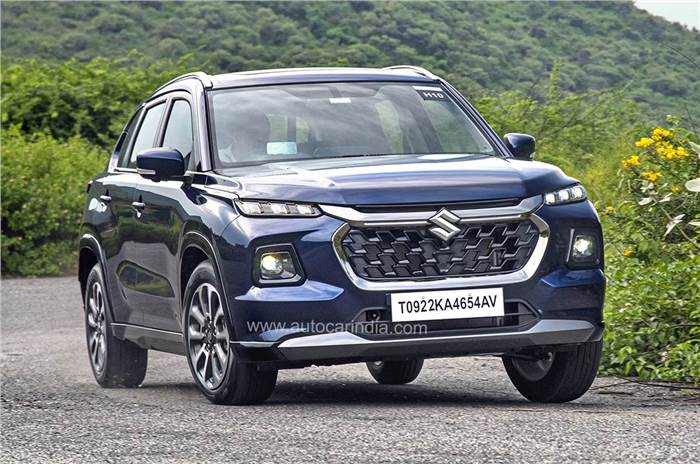
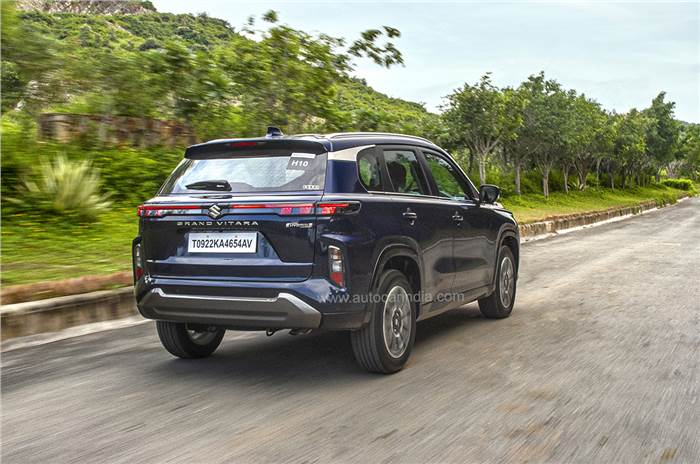
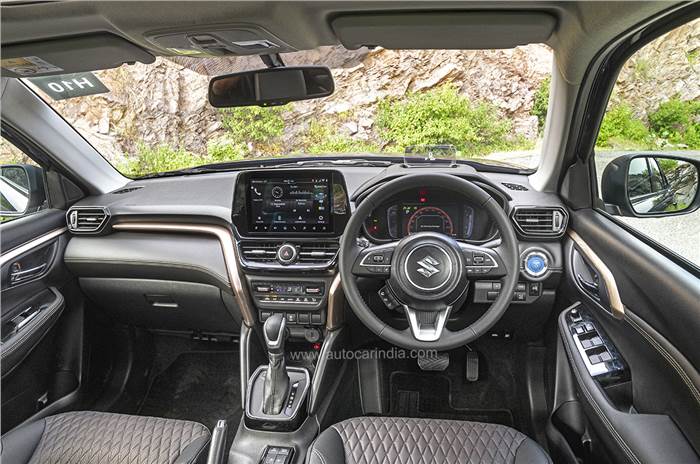
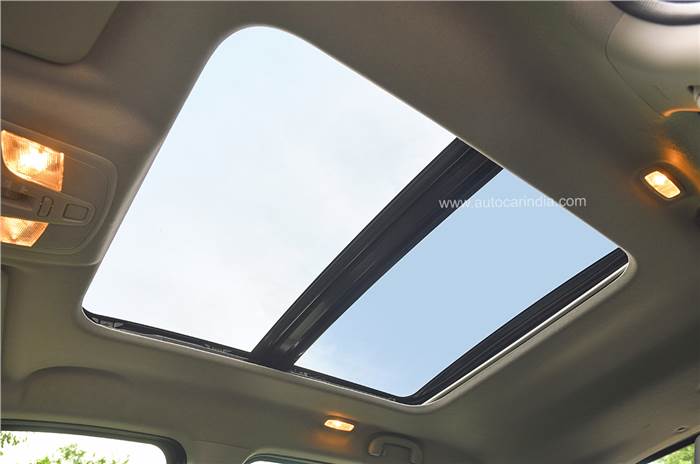
We Like
- Fuel Efficiency
- Optional 4X4 system
- Sorted ride and handling
We Don't Like
- Performance lacks punch
- Boot space on strong hybrid
Two heads are better than one. Two heads offer more combined brain power, two heads can solve problems better and pool resources, put more hands on the job, and the benefits of sharing only multiply. This is something the car industry has been doing a lot lately, like Hyundai and Kia, Skoda and Volkswagen, Renault and Nissan, and now Maruti Suzuki and Toyota.
But this isn’t any old synergy. No sir. Nothing less than the coming together of titans, this association involves the biggest carmaker in India and one of the largest, most successful nameplates globally. And this is their first real collaborative engineering venture.
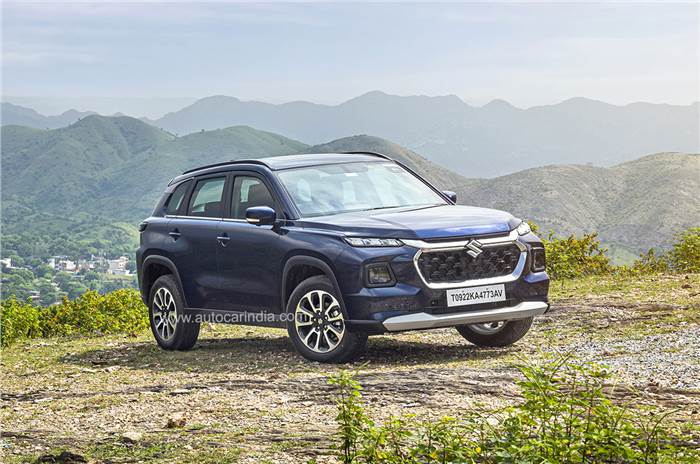
From Toyota comes its exceptional part-electric, strong-hybrid system. Something Toyota will eventually make fully in India, the system offers a massive jump in fuel efficiency to an official 27.97kpl under test conditions. From Maruti Suzuki comes the relatively affordable Global C platform in the shape of the Grand Vitara, complete with an optional four-wheel-drive system. Production takes place at Toyota’s plant outside Bengaluru, so expect very high standards for assembly; and most of the suppliers are from Maruti, which will help keep costs down. Pooling resources, yeah, that works.
Maruti Suzuki and Toyota will also field differently styled and equipped versions of the SUV. Question is, just how well does the Grand Vitara stack up against rivals like the Hyundai Creta, Kia Seltos, Volkswagen Taigun, Skoda Kushaq and the MG Astor? And how high up should you put it on your shortlist?
Maruti Suzuki Grand Vitara: design
The design of the Grand Vitara ticks all the right boxes. It has both front and rear overhangs fleshed out to give it more of an SUV stance, and the bonnet is flat, especially when viewed in profile. Up front, the block-like nose is full of interesting details – the high-mounted LEDs look cool, and there’s plenty of chrome on the nose. The two-part grille is both interesting and quite different: it blends a hexagonal lower section with a thick bar of chrome. Uniquely, the strong hybrid version gets a champagne-coloured grille; note how the colour contrasts with the Suzuki logo.
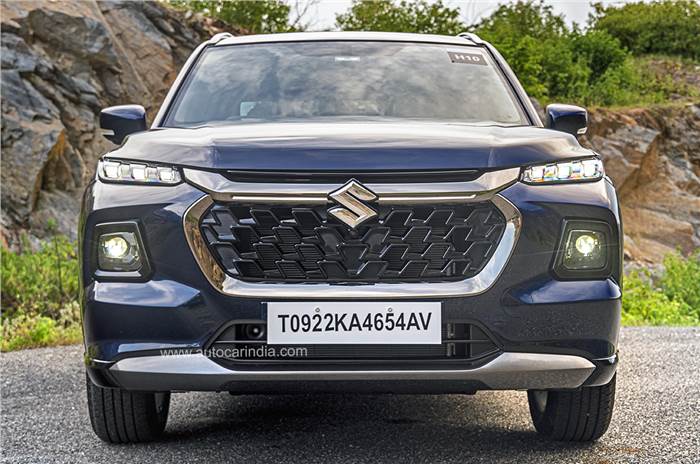
Along the side, the strong shoulder line gives the design plenty of form. The wheel arches have been squared for a more SUV-like feel, making the 17-inch wheels look a bit small, and the sloping roofline prevents the rear from looking too utilitarian. What draws the most attention, however, are the linked rear tail-lights and rightly so.
Built on Suzuki’s Global C platform, shared with the S Cross, Brezza and the Vitara in other markets, the Grand Vitara, however, is the longest SUV of the lot at 4,345mm. While it shares its long 2,600mm wheelbase with the S Cross, the doors, pillars and glasshouse in general seem to have been sourced from the updated Vitara. What’s nice is that the Grand Vitara carries over the robust build of its sister cars. And this should hold it in good stead when it comes to crash test ratings.
Maruti Suzuki Grand Vitara: powertrains
There are two engines. Suzuki’s 103hp, 1.5 Dualjet engine that comes with a mild hybrid system is the base engine on offer and comes with a 5-speed manual transmission and a 6-speed automatic. Some versions can also be bought with four-wheel drive. What makes the ‘All Grip’ system particularly effective is that it comes with a ‘lock’ function that fixes the power split 50:50 front/rear. Four-wheel drive versions also get hill descent control for greater stability and control.
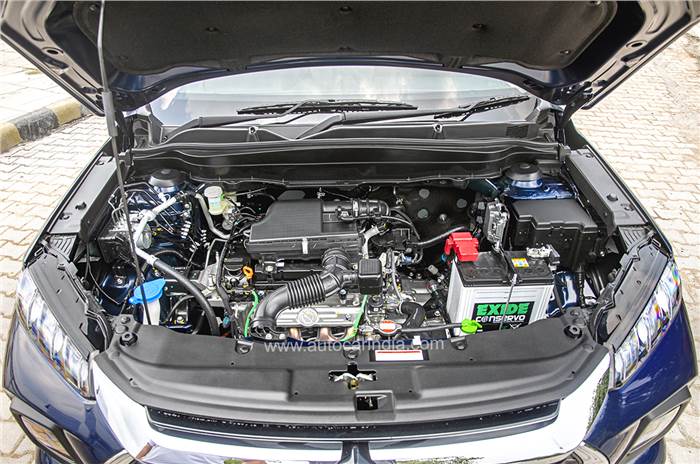
The other powertrain on offer is Toyota’s famous strong hybrid system. Similar in basic functionality to the one that powers the Camry and Prius, the system helps deliver a record breaking fuel economy; something Indian car buyers will just love. At its heart is a three-cylinder, 1.5-litre petrol that uses direct as well as indirect injection and runs a more efficient Atkinson Cycle. Maximum output for the total system (engine and electric motors) is 116hp.
This new system, however, differs from those that preceded it. The new AC synchronous electric motor here focuses more on power rather than torque. This is why it spins much faster and helps improve power delivery at higher rpm, allowing the car to operate in EV mode up to 120km/h. The petrol engine compensates for the reduced torque delivery when hard acceleration is demanded.
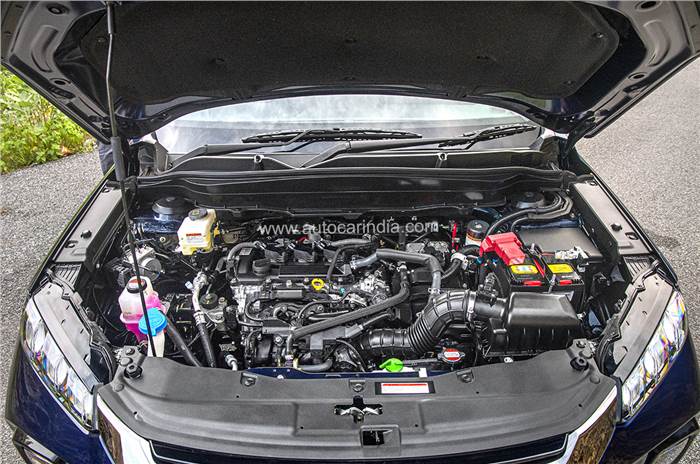
Electrical energy is stored in the battery that’s placed in the boot. Other Toyota vehicles that use the same hybrid system have it placed under the rear seat, where it doesn’t take up much space. But here, engineers seem to have encountered packaging problems. Boot space, as a result, on the strong hybrid is only 255 litres, and that’s even after placing the spare wheel under the floor.
This fourth-gen hybrid system is also different in another way. Unlike Toyota’s other hybrid systems that use a NiMH battery, this new one uses a 0.76kWh lithium-ion battery, which is lighter and can push out more instantaneous power. Like many strong hybrids, this car also has no dedicated reverse gear; you only run the e-motor in reverse to go back.
Maruti Suzuki Grand Vitara: space, comfort and features
The Grand Vitara creates a strong first impression on the inside too. The dashboard has an attractive layered design, the central console is flanked by chunky metal brackets and Maruti has also used chrome, leather and double stitching to good effect here. The padded dash, partly finished in leather, looks particularly upmarket. In addition, the massive panoramic sunroof floods the cabin with light and what’s neat is both the glass panes of the sunroof slide back. The cloth shroud or sunshade, however, is quite thin and transparent and that potentially could let in a lot of heat.
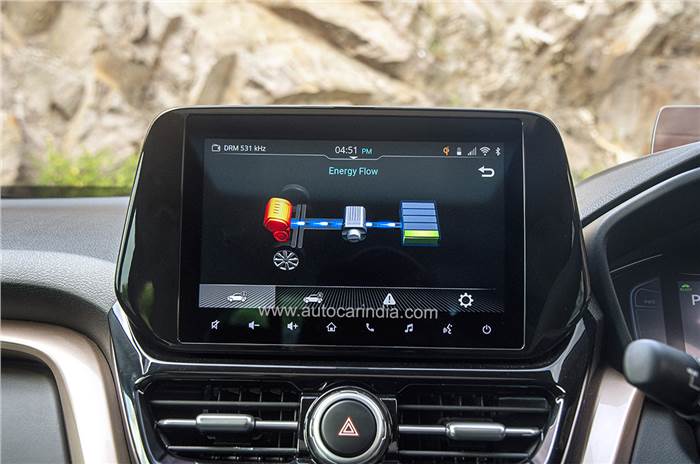
As you look around the cabin you also see plenty of familiar parts. The chunky AC controls and vents work extremely well, and the 9-inch touchscreen infotainment system is placed in a manner that makes it easy to read. The strong hybrid version of the Grand Vitara also gets a screen-based instrument panel with several modes and display options. While quality levels on some less important bits on the top of the dash and on the lower half are pretty ordinary, the dash and cabin in general deliver a robust, solid feel; and that’s exactly what you want from your SUV.
What also makes the cabin work well is that seat comfort is very good. The front seats are well suited to tall drivers – they are wide, well bolstered, offer good support and some variants get cooled seats as well. There’s also a fair amount of legroom in the rear of the cabin. It isn’t as wide as a Creta and headroom is tight if you are above six feet tall, but you are sat at a good height, the seat is generous and the adjustable backrest allows you to recline one step as well.
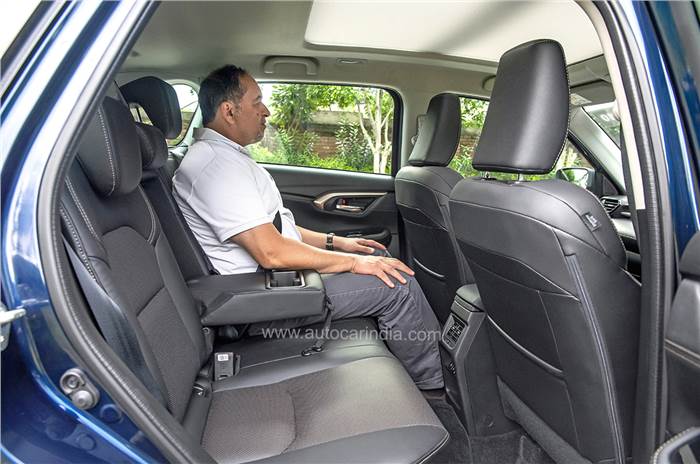
When it comes to features, the Grand Vitara is extremely well equipped, with powered seats being the only additional useful feature offered by rivals. Higher variants of the SUV get features like a 360-degree camera, wireless charging, heads-up display, wireless Apple CarPlay and Android Auto and connected car tech with remote aircon start. You also get vents in the rear and one USB A and C socket, and rear seats that split 60:40; particularly important for the strong hybrid with the small boot.
In terms of safety features, the Grand Vitara gets rear disc brakes, electronic stability control, hill hold assist, 3-point seat belts for all seats, and ISOFIX child seat mounts. Dual airbags are standard while higher-spec versions add side and curtain airbags.
Maruti Suzuki Grand Vitara: engine, gearbox and performance
The Grand Vitara, powered by Suzuki’s 1.5 Dualjet, puts out 103hp – a fair amount. It is down on torque, however, when compared to rivals, and what torque there is, a maximum of 137Nm, only comes in fully at 4,400rpm. What skews performance even further is that it is clearly tuned for fuel efficiency.
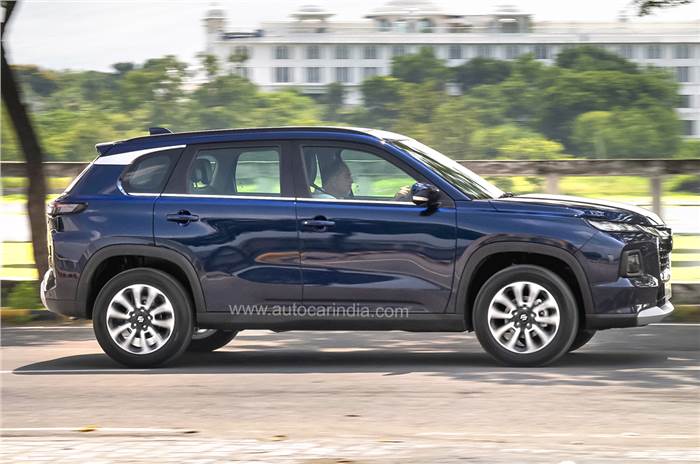
Initial responses are actually quite good and as you take off, the engine feels smooth and silent. It is jerk free to drive at low speed and the steady progression means you can enjoy a relaxing drive. But try and up the pace, and the engine is slow to respond and feels laid back. What’s worse is that there is no real sense of urgency even when you press down harder. Past 3,500rpm, the 1.5 Dualjet-powered Grand Vitara does accelerate with more energy, but there’s no real surge in performance and that punch you expect from a turbo engine is missing. To top it off there are no drive modes; the option of a sportier tune would have helped.
While the six-speed automatic is smooth and shifts smartly, especially when you use the paddles, the automatic soaks up even more power, and so the Smart Hybrid version of the Grand Vitara works best with the manual. As ever with Maruti, the 5-speed manual is light, accurate and very pleasant to use, and the clutch is well judged too.
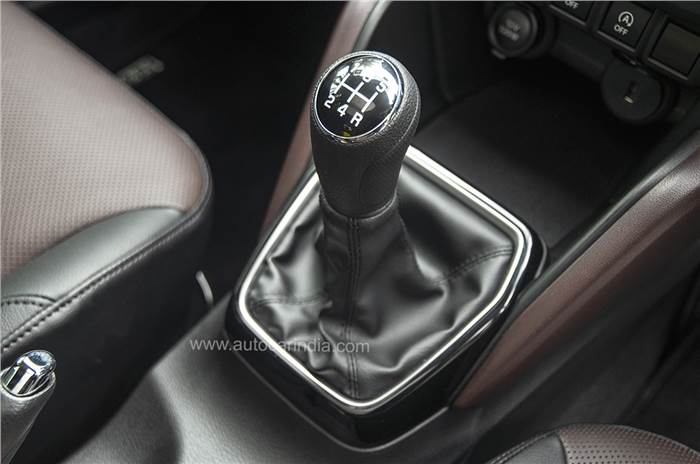
The Intelligent Electric Hybrid, as Maruti calls its Toyota hybrid equipped system, is clearly the powertrain to go for if you can stretch your budget. Part of the charm is starting off in electric mode. Switch on the car and apart from the tiny ready sign on the dash, you get no indication that the car is ready to be driven. This takes some getting used to. Electric propulsion from a standstill, however, is pleasantly smooth, the Grand Vitara responds well to a tap on the throttle, and so long as the battery has enough juice and you are light with your right foot, you can run in electric only mode for quite a bit, even at regular driving speeds. The battery, however, is small and this means the three-cylinder engine has to fire up to charge the battery and/or boost performance.
After running silently in EV mode, the engine does make its presence felt. The direct injection three-cylinder engine is smooth and relatively vibration free, but it sounds throaty at times, especially when you put your foot flat and ask for a burst of power. For the most part though, and in most scenarios, performance is refined, and with roughly 80hp of electric boost to aid the combustion engine (or the other way around), the Grand Vitara responds very sharply to even large prods on the throttle. The addition of instant torque, in fact, feels great to use and what feels nicer still is that you don’t need to use much right foot to make quick progress.
As speeds build and you hit highway speeds, the Grand Vitara takes a bit longer to respond to a stomp on the right pedal. With the mechanical CVT running the show and the engine playing catch up, there’s a bit of wait before you get full thrust. Once the power arrives, the change in pace is gratifying. Still don’t expect the punch of a turbo engine here. The strong hybrid will do 0-100kph in roughly 12 seconds, and that’s at least a couple of seconds shy of the 1.4 and 1.5 turbos. And this is in the most responsive ‘power’ mode.
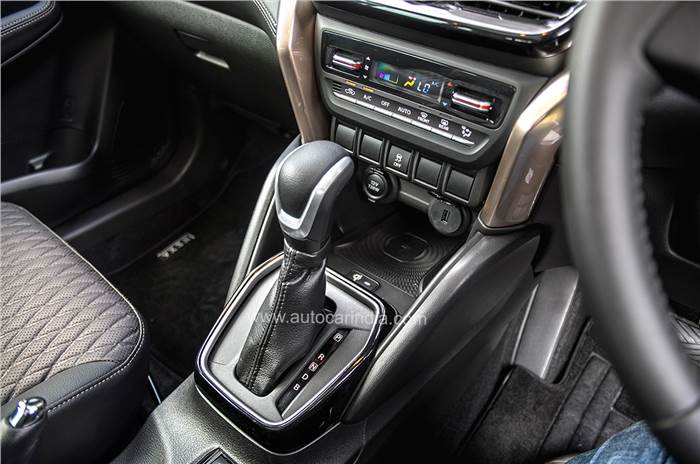
Of course, what the turbos can’t quite give you is the startling fuel economy. We got more than 18kpl after some mixed driving that included plenty of hard runs. Expect in excess of 20kpl in real world conditions, and more if you drive with restraint.
Maruti Suzuki Grand Vitara: ride, handling and off-road
What Maruti has got spot on is ride and handling. Bump absorption in general is excellent, it can be driven with abandon even over really bad roads, and then, while the set-up is supple, there isn’t too much up and down movement either.
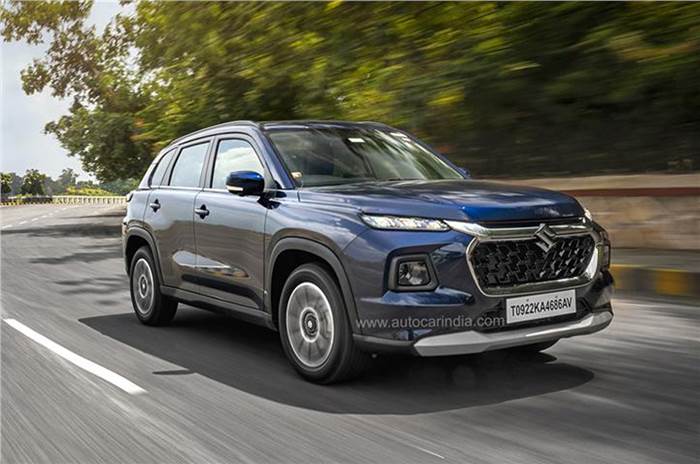
The Grand Vitara is also light and easy to drive in traffic. The steering has a nice amount of weight, not too much, visibility is good and it’s an easy SUV to thread in and out of traffic. It’s also especially happy at speed on a highway and feels stable and confidence inspiring.
The well weighted steering and good body control also pay dividends on winding roads. In fact, for a car that has 210mm of ground clearance, the Grand Vitara feels surprisingly agile. It feels happy to turn into corners, the steering loads up nicely and as if this weren’t enough, the Grand Vitara also manages to exude a fun and playful demeanour from behind the wheel. What a pleasant surprise. Wish it had more punch though – a lot more – this chassis deserves it.

During our two-day drive, we also got to try the four wheel drive version over a set course. While some of the obstacles created were more for entertainment, we did drive over some real slush and some slippery inclines. Here the four-wheel drive ‘lock’ proved its worth and the Grand Vitara also executed the steep climbs quite effortlessly, once the rear axle was similarly locked.
Maruti Suzuki Grand Vitara: first impressions
The Grand Vitara feels like the right SUV at the right time. The strong hybrid system, borrowed from Toyota, has the ability to deliver outstanding fuel economy, the engine is seamlessly integrated into the Grand Vitara; and with the optional four-wheel-drive system available on with the 1.5 Dualjet engine, owners looking to drive off-road have a real option.
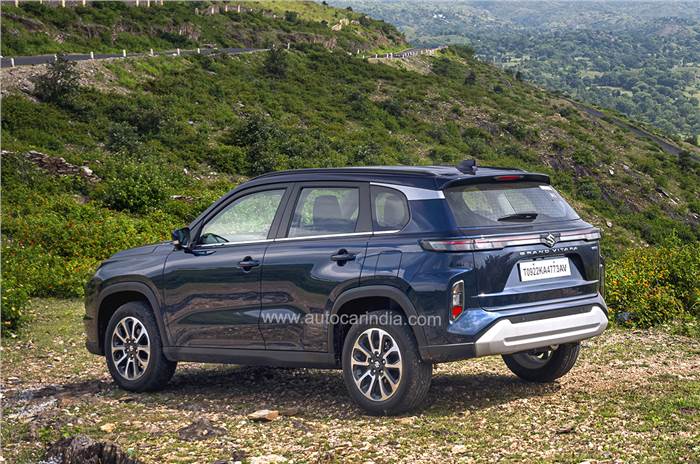
Also see:
2022 Maruti Suzuki Grand Vitara video review
2022 Maruti Suzuki Grand Vitara mild hybrid video review
Tech Specs 
Copyright (c) Autocar India. All rights reserved.




 Engine
Engine Transmission
Transmission Efficiency
Efficiency Acceleration
Acceleration Body
Body Suspension
Suspension Steering
Steering Brakes
Brakes Dimensions
Dimensions
Comments
Member Login
Personal Details
Mangal Singh - 713 days ago
Hi Guys, I am sharing my feedback after 1st service of Grand Vitra Strong Hybrid after driving of 2500KM in last 1 months. Pros : • Very Good fuel efficiency, I have driven 3 long journey o 1st before 1st Service: From Gurgaon to Kurukshetra through KMP and best avergre was 23.9 Km/Litter o 2nd before first service from Gurgaon to Rishikesh that was also 24 KM/litter o 3rd after first service and average was 28.6 Km o Average speed was 75 to 90 KM maximum time as I generally don’t drive fast • Noise: o Quite silence when on battery, hardly you can feel that engineer is started but when it is on petrol then noise is same like other normal petrol car. • Shifting between Electric and petrol o Cannot feel at all, it is very smooth and even I have seen that it run on battery even at ~70 KM speed, so it is hard to conclude tat when it run on Battery or when it run petrol automatic Cons: Music system is crap • Most of the time you will get frustrated and would like to through away if you want to connect your smart phone. • It is really frustrating that it is not tested at all, to connect new phone I am betting you will scratch your head and not sure who us responsible to have some untested system Voice call using wireless • It is one of the worst and even if you have 1000 Rs Bluetooth speaker that have better quality • On top of that if you want to use your own personal wireless headset when you are in car then you cannot use because Car wireless has high power, and you cannot use until unless you power it OFF or you remove your phone from list. It is worst. Boot Space Even if you have small car that can carry more luggage so if you are planned long trip then you will cry and think 10-time what mistake you have done by buying this car. Creta or KIA which is far far better in boot space. Comfortable of seat. Comfortable of seat is similar if you drive a car under 13 to 14 lac , like Sonnet, XUV300. You cannot feel that you have invested 21 lacs, all seat function are manual like you have 6 to 7 lac car. Nothing special in seat comfortable where other segment car under this price Wireless Phone charger • Some time it works with Iphone only and some time it does not. It is waste of space and not adding any value and you cannot use this. Summary: It is overprized car and not worth at all until unless you are driving 200 to 300 Km daily then only you can cover your cost else other features is worst and I think price was and if just not compare the fuel efficiency, then KIA or Creta is far better. I would not recommend spending that much money and particular music system is crap one as it is not tested at all, and quality is too bad, and you cannot make sure when your phone will connect and when it would not and you cannot take your call using this music system.
Yash Jadhav - 827 days ago
Sir please rate the car out of 5 at the end of every review